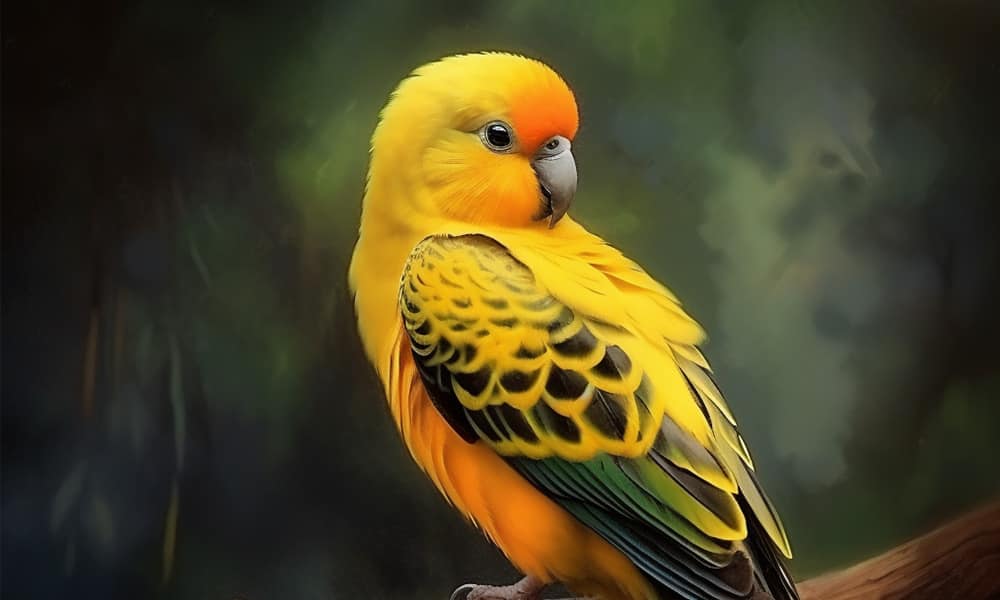The driver Franklin told me we would see them soon. Our bus of U.S. study-abroad students from Costa Rica’s Institute for Central American Development Studies had recently left Managua and was heading north toward Matagalpa through flat cattle country choked with gnarly brush. Near a place called Las Playitas, men sitting under the sparse shade of calabash trees ran to the highway to show us their wares: an iguana, claws tied behind its back, and parrots and parakeets on a stick.
It was the parakeets that grabbed my attention. Something was odd. I could see they were Orange-fronted parakeets by their long tails, head colors and size. Indeed, the orange-fronted is a common bird on the dry Pacific coast of Central America, and I know it well. Yet these parakeets had much more yellow plumage than the birds I was familiar with.
I wondered if the Nicaraguan birds belonged to a separate subspecies or geographic race that had yellow feathers instead of the lime green I was used to seeing. I returned to my library in Costa Rica and read all I could about this parakeet, but not a single source mentioned anything about a yellow variety from Nicaragua.
It is a fact that geographic races of a given species can possess different colors or patterns. For example, in Costa Rica the yellow-naped parrot has yellow only on the back of its neck, but the race living in southern Mexico has yellow on top of the head as well. And in the case of the common fox squirrel of North America, the southern races are colored gray with black heads, while their northern counterparts are rusty to orange.
So now I was stumped. I decided that on our next trip to Matagalpa, I would have our driver stop the bus so I could take some photos. That way I could show them to my ornithologist friends to get their opinions. So with our students pressing their faces against the windows, our bus pulled on to the shoulder, the bird owners got tips for a couple of pictures, and off we went.
On this second trip I realized just how yellow they were. Not being entirely pleased with my rushed camera work from the highway, I began to ask around near the market in Matagalpa for other captive orange-fronted parakeets to photograph. At the back of a small dry goods store, I found one in a cage, and the owner kindly let me take a picture of it. But, disappointingly, it looked just like the ones from Costa Rica.
When I crossed the street to buy a ball-point pen at a school supplies store and saw that the owner also had a pet orange-fronted, I commented to him about his bird being green and not yellow.
His energetic response surprised me. “The vendors of the yellow parakeets should be reported to the animal protection society! What they do is cruel.”
He could tell by my face that I wasn’t following, so he went on. “The yellow bird I bought from them molted and its green feathers grew back. Wetting the birds with Clorox to bleach them is a barbarity.”
It probably took a few seconds for my mouth to close. The parakeet vendors were dying their captives because a yellow bird is more of a novelty, and its market value goes up. It never occurred to me that someone would actually be doing such a thing.
Since the same owner of the bookstore told me they also use aniline to dye feathers red, I went back to take another look at our digital photos from the roadside and saw, sure enough, the birds’ foreheads were red instead of their natural orange.
Some of you may be asking if it is even legal in Nicaragua to sell wild captured animals and the answer is that it is not. A sad reality in most of Central America is that budget limitations and corruption within the government institutions keep wildlife laws from being enforced. The pet trade in parrots and parakeets continues to be so strong in Central America that many populations of these birds are extremely low or have been wiped out entirely.
So if you make the trip to Matagalpa from Managua, keep an eye out for the decorated parakeets. But please don’t buy.






